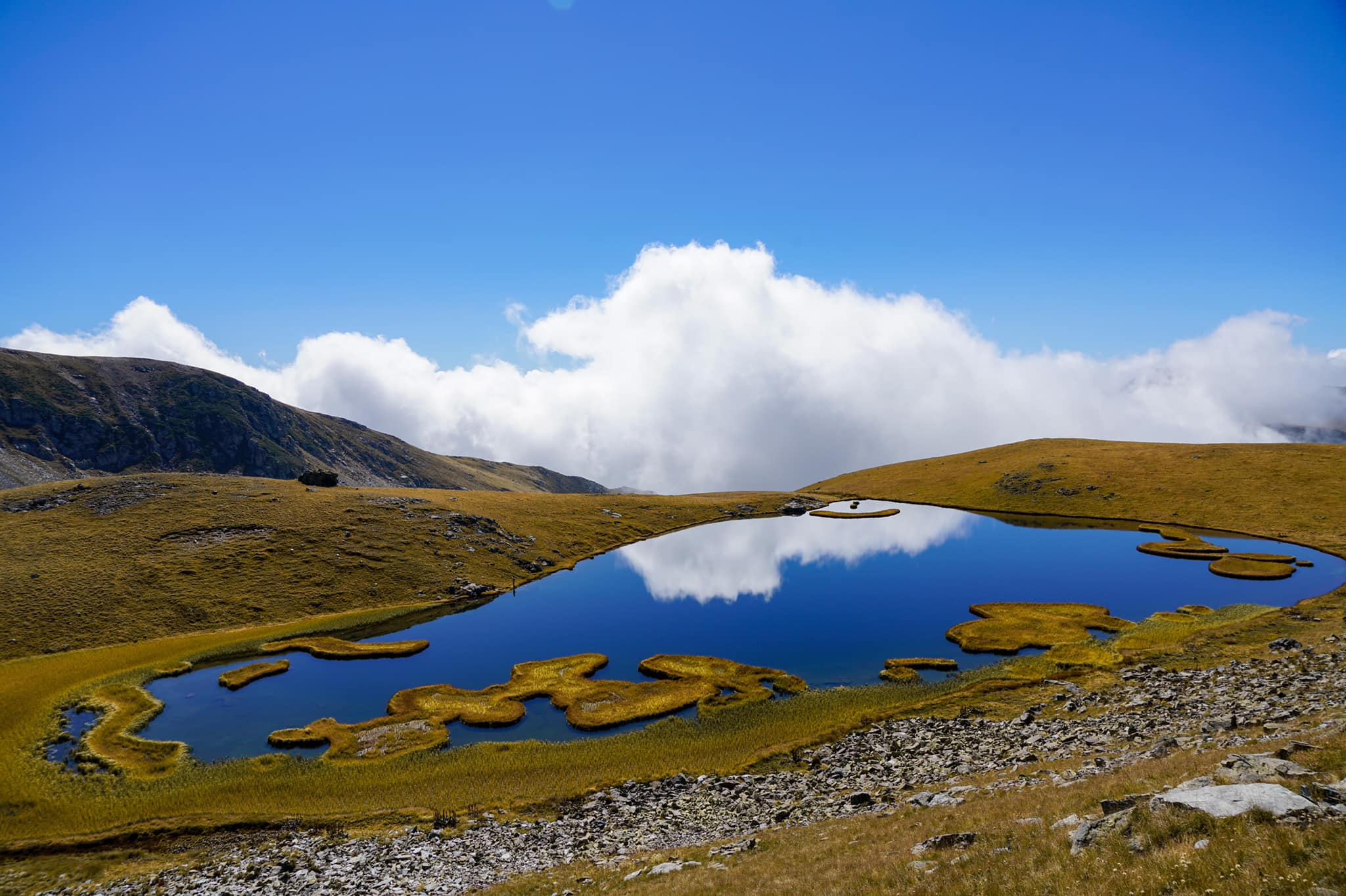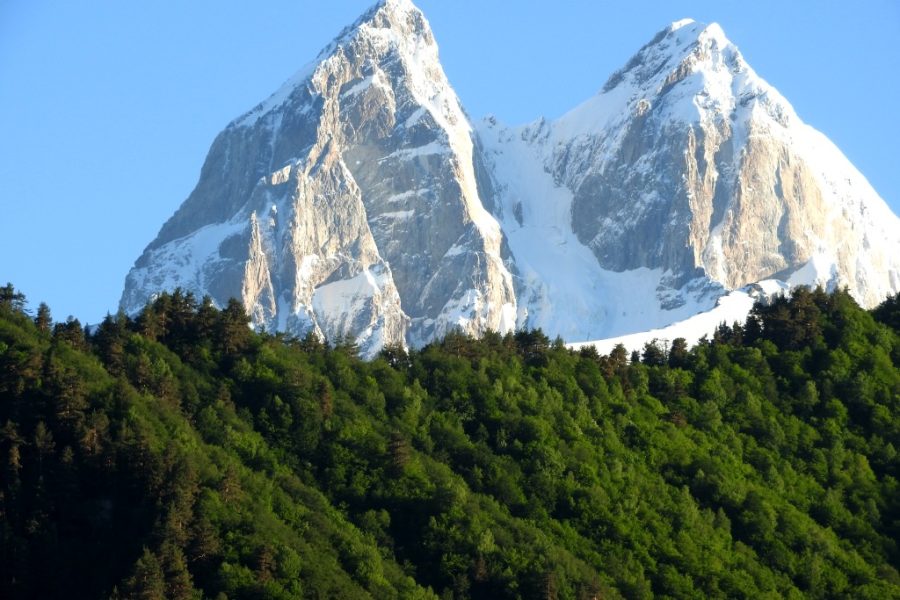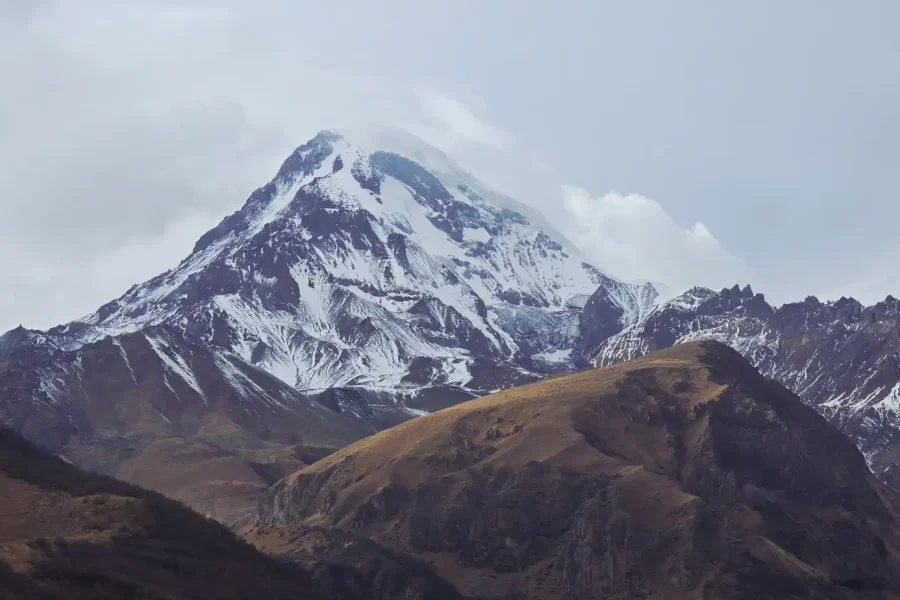Welcome to Lagodekhi Protected Areas
Welcome to Lagodekhi Protected Areas, one of Georgia’s oldest and most beautiful places to enjoy nature! This area is in the far northeast of the country, next to Azerbaijan. It has untouched forests, tall mountains, beautiful waterfalls, and animals that can’t be found anywhere else. It was set up in 1912, making it one of the first nature reserves in the whole Caucasus region. The main goal has always been to protect the area’s beautiful and mostly untouched nature. Imagine walking through forests that have looked the same for hundreds, if not thousands, of years!
The area is located on the southern slopes of the huge Greater Caucasus mountains. This means that the landscape is very dramatic, with steep mountainsides and deep river valleys. The highest peaks are over 3,500 meters above sea level, while the lowest points are around 400 meters above sea level near the town of Lagodekhi. This range of heights makes it possible for plants and animals to live in many different places. There are lush, green forests lower down that are home to trees like beech, hornbeam, and maple. The forest changes as you go up higher, and eventually you reach open meadows full of colorful flowers in the summer. Finally, you reach rocky peaks that are often covered in snow.
What makes Lagodekhi so special is that it hasn’t been changed by people. A big part of the area is a Strict Nature Reserve, which means that people can’t do much there to protect the natural processes. Scientists can study nature in its most basic form because of this. But there is also a Managed Reserve area where visitors can explore marked trails and see the beauty for themselves.
Lagodekhi is known for having a lot of different kinds of plants and animals. The East Caucasian Tur, chamois, red deer, roe deer, wild boar, brown bears, and lynx all live there. Birdwatchers also love it because they can see eagles, vultures, and the rare Caucasian Snowcock. There are old trees in the woods and flowers that bloom in the meadows that you can’t find anywhere else.
Hiking is one of the most popular things to do for visitors. There are trails for people of all skill levels, from short walks to beautiful waterfalls like the Ninoskhevi (Great) Waterfall and Grouse Waterfall, to hard multi-day hikes like the famous route to Black Rock Lake. This stunning glacial lake is high up in the mountains near the border and has amazing views. When you go to Lagodekhi, you can step back in time, see nature at its most wild, and learn why it’s so important to protect these places for Georgia and the world. It’s a peaceful place with a lot of adventure and beautiful nature.
Basic ID
Official Name:
Lagodekhi Protected Areas, which includes the Lagodekhi Strict Nature Reserve and the Lagodekhi Managed Reserve. In Georgian, it says: ლაგოდეხის დაცული ტერიტორიები (Lagodekhis Datsuli Teritoriebi).
What kind of protected area it is:
- Strict Nature Reserve (IUCN Category Ia): The highest level of protection, mostly for scientific research, and usually no visitors are allowed.
- Managed Reserve (IUCN Category IV): Lets visitors do things that are good for the environment, like hiking on marked trails and learning about the environment.
Established:
1912 (the first time it was established, making it one of the oldest in Europe and the Caucasus). Later, it will be reorganized under the current structure.
Managing Body:
The Agency of Protected Areas (APA) of Georgia, which is part of the Ministry of Environmental Protection and Agriculture, is in charge.
Where it is and how to get there
Location:
Lagodekhi Municipality, Georgia, in the Kakheti Region. In the northeastern part of Georgia, on the southern slopes of the Greater Caucasus mountains, it shares borders with Azerbaijan and Dagestan (Russia).
Map/Coordinates:
The center’s coordinates are about 41°52′ N Latitude and 46°18′ E Longitude. You can get maps at the Visitor Center and on the APA website.
Closest Cities/Towns:
The main hub is the town of Lagodekhi, which is right at the entrance to the protected areas.
How to Get There:
By car, Lagodekhi is about 160 km (2.5 to 3 hours) east of Tbilisi. The road is mostly in good shape (paved). Most of the time, regular cars can get you to the town and visitor center. Public Transport: Marshrutkas (minibuses) run often between Tbilisi and Lagodekhi town. Most of the time, they leave from Samgori or Isani stations. Tbilisi International Airport (TBS) is the closest airport.
Size and how it looks
Area:
The total area is about 24,451 hectares (244.51 km²). Strict Nature Reserve: about 19,952 ha. Managed Reserve: about 4,499 ha.
Topography:
The southern slopes of the Greater Caucasus range are mountainous. It has steep slopes, deep river gorges, and high ridges. The height of the area varies from about 400 meters to more than 3,500 meters.
Geology and Important Things:
Includes high mountain peaks, rocky outcrops, and river valleys that were made by erosion. The Black Rock Lake (a glacial lake) and a number of beautiful waterfalls are two of the most interesting things about the area.
Hydrology:
A lot of rivers and streams, like the Ninoskhevi, Shromiskhevi, Lagodekhistskali, and Matsimistskali rivers, flow down from the mountains. Includes a number of waterfalls, such as the Gurgeniani (Grouse) Waterfall and the Ninoskhevi (Great) Waterfall.
Climate:
Changes a lot with height. The climate in the lower areas is humid subtropical, with mild winters and hot summers. In the winter, it snows a lot (usually from November to May/June) and the summers are cooler. It rains a lot all year, but especially in the spring and fall.
Goal and Importance
Reason for Designation:
To protect the southern Caucasus slopes’ unique, mostly untouched forest and alpine ecosystems, keep its high biodiversity (which includes many endemic and rare species), and make it easier for scientists to do research.
Important Values:
It is one of the best-preserved examples of diverse, untouched forests in the temperate zone. Important for scientists to learn about how nature works. Full of plants and animals. Keeps important water sources safe. Provides chances for ecotourism and learning.
International Recognition:
- Emerald Network Site (according to the Bern Convention).
- Important Bird Area (IBA).
- Part of the Colchic Rainforests and Wetlands World Heritage nomination, which is mostly about Western Georgia, but Lagodekhi’s unspoiled forests have some of the same features.
Biodiversity (Plants and Animals)
Ecosystems and habitats:
include broadleaf deciduous forests (mostly beech and hornbeam), mixed forests, subalpine forests (birch and high-mountain oak), subalpine and alpine meadows, scree slopes, rocky habitats, and riverine ecosystems.
Key Plant Species:
Oriental Beech, Caucasian Hornbeam, Oak species, Maple species (like Velvet Maple), Lime, Ash, Chestnut (lower down), Caucasian Rhododendron, and many wildflowers that grow in meadows. A lot of native and ancient plant species.
Important Animal Types:
Mammals: East Caucasian Tur (Dagestan Tur), Chamois, Red Deer (Caspian Deer), Roe Deer, Wild Boar, Brown Bear, Wolf, Lynx, Badger, Pine Marten, Fox, and Wildcat. Birds: the Caucasian Snowcock, the Caucasian Black Grouse, the Golden Eagle, the Griffon Vulture, the Bearded Vulture (Lammergeier), the Peregrine Falcon, and a number of woodpeckers and forest birds. Reptiles and amphibians include the Caucasian Salamander (which is rare) and the Caucasian Viper.
Endangered or Rare Species:
The East Caucasian Tur (Near Threatened – IUCN), the Brown Bear (protected in Georgia), the Lynx, the Golden Eagle, the Caucasian Snowcock, and the Caucasian Salamander are all species that are of concern for conservation on a national or international level.
Information for Visitors
Visitor Center(s):
Vashlovani Str. 17 in the town of Lagodekhi. You can find the Agency of Protected Areas’ phone number and email address on their website. It has information, maps, guides, souvenirs, and a small exhibit. You usually have to sign up here before you can start hiking.
Hours and seasons of operation:
Check the APA website for the Visitor Center’s regular hours. The trails in the park are usually open all year, but trails that are high up, like Black Rock Lake, are usually blocked by snow from late fall (October/November) to late spring/early summer (May/June). High trails are best in the summer and early fall (June to October). Most of the year, you can get to the lower trails, like waterfalls.
Fees and permits:
Yes, there are entrance fees for each person each day. There are extra fees for camping, renting a horse, hiring a guide, and so on. Visit the APA website to find out what the current prices are. You need to get a permit or register at the visitor center.
Trails and Routes:
There are a number of marked trails in the Managed Reserve: The Ninoskhevi Waterfall (Great Waterfall) Trail is moderately hard and takes about 4–5 hours to walk the 8.5 km round trip. Through the woods, it goes to a big, beautiful waterfall. The Gurgeniani Waterfall Trail (also known as the Grouse Waterfall or Rocho Waterfall Trail) is a shorter, easier walk that takes about 2 to 3 hours to complete. Takes you to another beautiful waterfall. (Note: Access may be limited at times; check with the visitor center.) Black Rock Lake Trail: A hard hike that usually takes three days and is about 48 km long. You need to be in good shape, have the right gear, and book your shelters and campsites ahead of time. Has beautiful views of the mountains and the glacial lake. You can also ride a horse on this trail. Machi Fortress Trail: not too hard, it’s a nature walk that goes past the ruins of an old fort. About 10 km round trip, which takes about 4 to 6 hours.
Things to do:
hiking and trekking, camping (only in designated areas), horseback riding (tours can be arranged), birdwatching, nature photography, and educational tours (which can be arranged through the visitor center).
Place to stay:
Inside the park, there are designated campsites and tourist shelters along the Black Rock Lake trail. You have to book these ahead of time. Basic rules. Nearby: Lagodekhi town has a lot of guesthouses and small hotels that are comfortable places to stay.
Amenities:
There is a visitor center with bathrooms and information. Trails with signs. Basic shelters and campsites along longer trails (may have pit toilets and water sources nearby—check to see if they are safe to drink). There are places to have a picnic near the start of some trails. Signs with information along the trails.
Advice on Safety:
The weather in the mountains can change quickly, so be ready for rain and cold even in the summer at high altitudes. Wear the right clothes (layers, waterproofs) and sturdy hiking boots. Bring enough food and water, especially if you’re going on a long hike. Look at the map or ask a ranger where the water sources are. Let the visitor center know when you plan to go hiking and when you plan to come back. Be careful of animals, especially bears. Make noise when you hike. Do not give animals food. Stay on the marked paths. The ground can be steep and slippery. Take a basic first-aid kit with you. In Georgia, the emergency number is 112. In remote areas, cell phone signals may not be very strong.
Rules and Laws
Code of Conduct:
Follow the Leave No Trace rules and take all your trash with you. Stay on marked paths to protect plants and stop erosion. Don’t make too much noise. Respect animals by watching them from a distance.
Things you can’t do:
- Without special scientific permits, you can’t go into the Strict Nature Reserve.
- You can only light fires in designated fire pits at campsites or shelters.
- You can’t hunt or fish.
- You can’t collect rocks, plants, or historical artifacts.
- You can’t feed wild animals.
- Usually, drones aren’t allowed. Check with the administration.
- Pets, like dogs, may not be allowed, especially on trails, because they scare off wildlife. Check the rules.
Zoning:
The area is clearly split into the Strict Nature Reserve, which is highly protected and not open to visitors, and the Managed Reserve, where tourist trails and activities are allowed.
Management and Conservation
Management Authority:
The Agency of Protected Areas of Georgia runs the Lagodekhi Protected Areas Administration. Rangers keep an eye on the area.
Conservation efforts:
include keeping an eye on important species (like Tur, deer, and large carnivores), protecting their habitats, patrolling against poaching, maintaining trails, teaching and managing visitors, and supporting scientific research.
Threats and problems:
Managing the growing number of tourists in a way that doesn’t harm the environment, the possible effects of climate change on fragile ecosystems, making sure that boundaries stay intact, and the risk of forest fires during dry spells.
Culture and History
Brief History:
Polish naturalist Ludwik Młokosiewicz started the park in 1912 to study the area’s unique nature. It is one of the oldest officially protected areas in the area.
Cultural Importance:
The Managed Reserve has the ruins of the Machi Fortress, which was built in the 9th or 10th century or earlier. You can get to them by a trail. Lagodekhi, a town close by, has its own history and culture.
Unique Features and Interesting Facts
- One of the oldest nature reserves in the Caucasus and what used to be the Russian Empire and Soviet Union.
- Contains a wide range of forests that are very well-preserved and are thought to be “virgin” or close to primary.
- A lot of plants and animals that live only in the Caucasus region live here.
- The hard hike to Black Rock Lake gives you a rare chance to see a glacial lake at a high altitude and maybe even a Caucasian Tur near the border ridge.
- For more than a hundred years, scientists have done important research in this area.





Leave a review